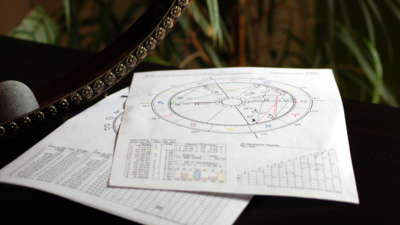How to Balance Main and Divisional Charts in Vedic Astrology


In Vedic Astrology, charts help us understand different aspects of life. They’re guidebooks, focusing on different aspects of your life with proper detail to tell you what influences a very specific tendency of your personality to do something. The main chart, or the birth chart (Rashi chart), gives an overall view of your life, but while this chart is a good overview of who you are and what makes you who you are, it isn’t concise enough for a detailed understanding of the exact things that influence your decisions in a matter. However, for a deeper analysis, astrologers use divisional charts (Vargas). These charts break down specific areas of life, like career, relationships, or health. Learning to balance both charts is essential for accurate readings. Here’s how you can do this step by step.
1. Start with the Main Chart
Always begin with the Rashi chart. This chart is the foundation and shows the overall strength of planets. Look at the ascendant (Lagna) and the placement of planets. Analyse their dignity (own sign, exaltation, or debilitation) and the aspects they receive. This gives you a general idea of the life path of the individual you’re trying to read for.
2. Focus on the Relevant Divisional Chart
Next, pick the divisional chart that matches the area of life you’re analysing. For example:
- D-9 (Navamsa): Relationships and spirituality.
- D-10 (Dasamsa): Career and achievements.
- D-7 (Saptamsa): Children and family.
Each divisional chart provides additional details, but it cannot contradict the main chart.
3. Check for Consistency
The key to balancing charts is consistency. If a planet is strong in the main chart but weak in the divisional chart, its effects might be mixed. For example, a strong Sun in the Rashi chart could show a great potential to lead in terms where leading is required, but if it is weak in the D-10 chart, there could be struggles in career leadership roles, where a diplomatic tendency could take away from being able to make hard decisions.
4. Understand Planetary Strengths
Study the Vargas to see how a planet performs in different areas. Use Ashtakavarga scores and Shadbala to measure planetary strength. Ashtakavarga assigns points (0 to 8) to planets based on their favourable positions, indicating their influence on houses and signs. High scores suggest strong positive effects, while low scores might mean that these planets are forcing unavoidable challenges in your life. Shadbala, meaning “sixfold strength,” evaluates a planet’s performance through six factors: positional, directional, time-based, motion-related, innate, and aspectual strength. High Shadbala scores show a planet’s ability to deliver what they’re promising in your chart effectively, while low scores might mean that this planet in your chart can exert extremely low influence. Together, these methods provide a comprehensive view of a planet’s influence and its capacity to shape outcomes in the chart.
Balancing these charts is about integrating the big picture (Rashi chart) with specific details (divisional charts). With practice, this approach leads to clear and meaningful predictions.







